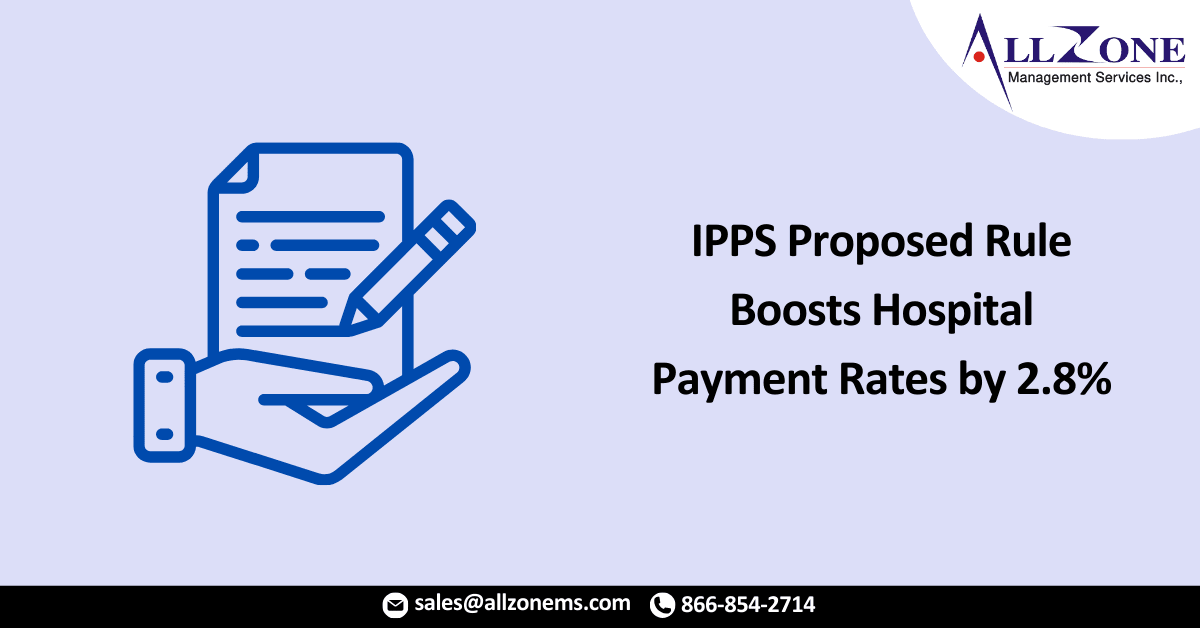CMS proposed a new rule for the fiscal year 2024 Inpatient Prospective Payment System (IPPS) increased hospital payment rates up to 2.8%. Also, the newly proposed IPPS rule adopts policies that are aimed at advancing health equity.
Under CMS’s new FY24 IPPS rule, hospital market basket update of 3.0 percent, less a projected 0.2 percentage point productivity adjustment for hospitals participating in the Hospital Inpatient Quality Reporting program and meaningful EHR users. Hospitals are still subjected to IPPS payment adjustments, including excessive readmission under Hospital Readmission Reduction Program.
In total, CMS expects that this newly proposed rule will increase operating and capital IPPS payments along with general increase in acute care hospital payment will reach by $3.3 billion. Although federal agency guessed that Medicare disproportionate share hospital payments and Medicare uncompensated care payments will reduce up to $115 million in next fiscal year.
Under FY24, CMS seeks to adjust IPPS Payment adjustments to acute care hospitals depends on their quality performance in inpatient hospital settings. This rule will also add incentives to hospitals and undeserved individual performs well on existing measures. Similar changes will added to Medicare Shared Savings Program and in Medicare Advantage and Part D Star Ratings Programs.
If the rule is finalized, it also modify several measures under Hospital Value-Based Purchasing Program, including
- MSPB Hospital measure
- Hospital-level Risk-standardized Complication Rate Following Elective Primary Total Hip Arthroplasty
- Total Knee Arthroplasty measure
- Health equity scoring change for rewarding excellent care in underserved populations.
To advance health equity, the IPPS proposed rule also would add 15 new health equity hospital categorizations for the FY 2024 IPPS payment impacts as part of the CMS Framework for Health Equity 2022-2032.
CMS has also proposed to allow rural emergency hospitals to be designated as graduate medical education training sites. The federal agency said this would enable more medical residents to train in rural settings amid worsening clinician shortages, especially in rural communities.
In light of the COVID-19 public health emergency ending, CMS also included an update to the new COVID-19 treatments add-on payment. The agency said in the proposed rule that discharges involving eligible products would continue to get the add-on payment through Sept. 30, 2023. After FY 2023, the add-on payment will expire.
Other key policies in the proposed rule include:
- Treating rural reclassified hospitals the same as geographically rural hospitals for purposes of calculating the wage index, meaning CMS will include hospitals with §412.103 reclassifications for FY 2024 calculations
- Revising the Stark Law requirements to clarify expansion exception requests and reinstating program integrity restrictions on the frequency of expansion exception requests
- Adopting three new electronic quality measures under the Hospital Quality Reporting Program (Hospital Harm — Pressure Injury eCQM, Hospital Harm — Acute Kidney Injury eCQM, and Excessive Radiation Dose or Inadequate Image Quality for Diagnostic Computed Tomography (CT) in Adults (Hospital Level — Inpatient) eCQM)
HOSPITALS DECRY 2.8% PAYMENT RATE UPDATE
The American Hospital Association (AHA) is upset with the proposed 2.8 percent IPPS rate increase for FY 2024. The trade association representing nearly 5,000 hospitals, health systems, and other healthcare providers said in a statement last night that the update is “woefully inadequate” given high inflation and costs of labor and supplies.
Medicare already pays less than the actual costs of hospital care, AHA pointed out.
“Layering these inadequate inflationary adjustments on top of Medicare’s existing underpayments to hospitals does not reflect the reality of the world hospitals are providing care in,” the statement said. “Without more substantial updates in the final rule, hospitals’ ability to continue caring for patients and providing essential services for their communities will be threatened.”
About half of US hospitals finished in the red in 2022, making last year the worst financially for hospitals and health systems. Rising expenses across the board directly contributed to negative margins as hospitals struggled to keep up revenue, the report from healthcare consulting firm Kaufman Hall added.
Hospitals and health systems are largely still in the negative although financial performance is starting to stabilize this year, Kaufman Hall recently reported.
However, industry leaders have questioned whether hospitals’ financial situations are dire enough to merit larger increases in IPPS rates. Last month, the Medicare Payment Advisory Committee (MedPAC) did not recommend any significant updates to IPPS rates beyond the current law of plus 1 percent.
MedPAC said hospitals would be able to maintain access to care without a larger rate hike.
AHA has refuted MedPAC’s claim, contending the group uses older data and that it cherrypicked data points to support its recommendation.

